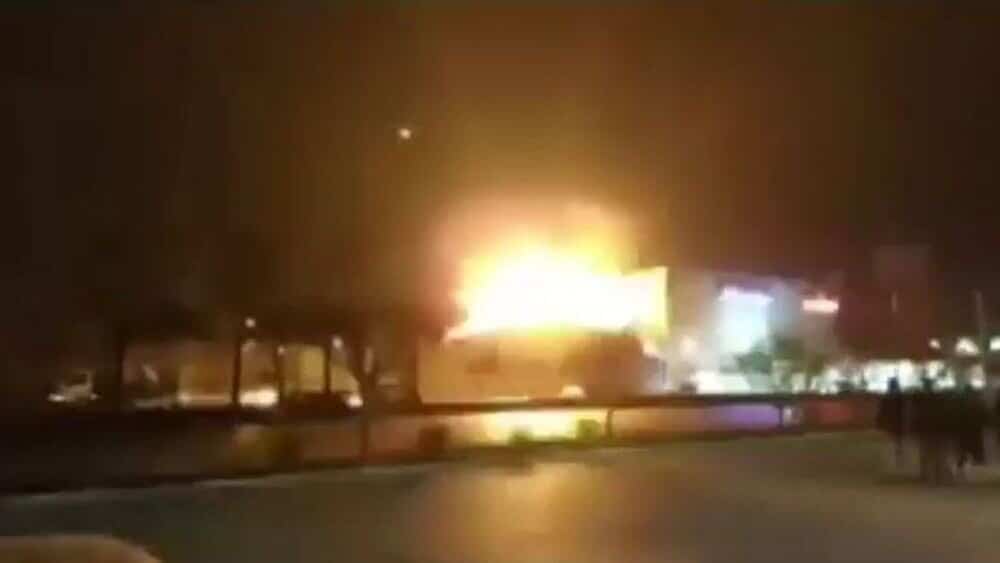An increase in regional tensions is assessed following multiple suspected Israeli operations targeting Iranian targets in Israel and Syria this week. This included a UAV strike targeting a munitions facility in Isfahan, Iran, and two UAV strikes targeting Iran-linked convoys in eastern Syria. Iranian responses have been subdued thus far, yet the potential for escalation and more kinetic responses affecting US and Israeli interests in the region should not be discounted.
Increase in Iran-linked tensions following Israeli UAV strikes in Iran and Syria
On 28 January, at least three quadcopter UAVs targeted a military munitions facility in the vicinity of Isfahan city in Tehran. The facility was reportedly used to manufacture and store ballistic missiles and UAVs. The outcome of the strike was subject to conflicting reporting, with US and Israeli media reports, citing unknown officials, describing the strike as “very successful” while Iranian state-linked sources referred to an “unsuccessful” attack intercepted by air defense systems. A statement by the Iranian Ministry of Defense added that the impact only caused minor damage to the roof of the building.
The operation again highlights Israel’s demonstrated ability to conduct and organize attacks against key infrastructure targets. The range of the variants employed indicates the strikes were most likely launched from inside Iranian territory, underscoring yet again Israel’s ability to penetrate the Iranian security infrastructure following multiple recent operations against sensitive targets in recent years. This includes most notably the assassination of nuclear scientist Mohsen Fakrizadeh near Tehran in November 2020 and sabotage operations against the Natanz nuclear facility in July 2020 and April 2021. While Israel remains unlikely to directly claim responsibility, this incident would comprise the first significant Israeli strike within Iran since Israeli Prime Minister Benjamin Netanyahu’s return to office on 29 December 2022.
For their part, Iranian officials downplayed any Israeli links and did not officially accuse Israel of involvement. That said, rhetoric on social media, including a Telegram channel by IRGC-affiliated Sepah Cyberi, predictably accused Israel of conducting the attack and stated that “experience has shown that Iran will retaliate”, going on to threaten “Zionist” oil tankers as likely targets.
Suspected Israeli or coalition airstrikes targeting Iran-linked targets in Syria
Two additional strikes against Iran-linked targets followed in eastern Syria on 29 and 30 January respectively. On 29 January, a large convoy of vehicles was targeted by a UAV strike in al-Bukamal district, eastern Deir Ez Zour province in Syria, shortly after the convoy crossed the border from Iraq. Israeli involvement is strongly suspected although some reports suggested the likely involvement of coalition forces. The next day, another airstrike was conducted in the same area, with local reports claiming the commander of an Iranian-backed militia group was killed alongside two non-Syrian companions. Uncorroborated reports claim the commander was inspecting the site of the initial strike on 29 January and that the strike targeted a four-wheeled vehicle.
In the near term, the outlook for Iranian retaliatory activity is understandably elevated, however the nature of Iranian responses remains difficult to predict. Previous Iranian responses to significant Israeli operations – including the above-mentioned operations in Iranian territory – have been limited to attacks on Israeli-linked commercial vessels, including cargo ships, in the Persian Gulf and, to a lesser extent, attempted UAV strikes against Israeli territory. More broadly, Iran has pursued a policy of “strategic patience” and opted for non-kinetic responses by accelerating the nuclear program; expanding its production of ballistic missiles; and further entrenching the presence of Iranian-backed proxy groups in the region. These measures have been intended to deny Israeli objectives while calibrated to avoid regional escalation.
While this activity is largely expected to continue in line with Iran’s long-term strategic objectives in the region, the potential for escalation and more kinetic responses should not be discounted. In the near term, any such responses would most likely comprise attacks against commercial vessels and other Israeli-linked targets. A less likely, but not implausible scenario, involves the covert targeting of Israeli officials and diplomatic interests in a manner that ensures plausible deniability.
Associated risk of hostilities against US-linked sites
The associated risk of activity affecting US and coalition-linked interests forms an additional consideration, with previous attacks affecting these sites correlating with an uptick in Israeli-Iranian tensions. Given existing patterns, this would most likely include strikes on bases affiliated with coalition forces in eastern Syria, including the al-Tanf garrison and Mission Support Site Conoco, which have been regularly targeted in recent months. Based on existing rhetoric, related activity affecting US-linked sites in Iraq cannot be discounted, to include potential targeting of US government-linked locations in Iraq, but it should be noted that the relative lull in militia activity targeting US interests largely continues. Recent exceptions include IED strikes against coalition-linked logistics convoys and a rare botched kidnapping and murder of a US citizen in Baghdad in November, however, current activity levels fall significantly short of the attack patterns witnessed in recent years.
Lastly, plausible Iranian responses may also involve strikes against Kurdish-Iranian opposition groups in the KR-I who are often accused by Iran of having links with Israel. Such operations are assessed as more likely should accusations surface that the strikes in Isfahan originated from within the KR-I, with retaliatory strikes most likely involving UAV or missile strikes near the border areas. As of 31 January, no such allegations have been made, but related Iranian rhetoric is worth monitoring.
Regardless, tensions associated with Israel’s recent activities are expected to continue. Under Prime Minister Benjamin Netanyahu, Israel is expected to pursue a more hardline, unilateral policy towards Iran, with hostilities expected to increase accordingly. Likewise, the Israeli government’s stance on the Israeli-Palestinian conflict and the recent uptick in Israeli-Palestinian tensions form an additional consideration likely to invite hostile reactions from Iranian-backed groups, as seen in Iraq this week and further discussed in this report available to Talos subscribers. Besides providing material and diplomatic support for Hamas and other Palestinian militant groups, Iranian responses to Israeli-Palestinian tensions are typically limited to rhetoric. That said, related dynamics should be monitored closely over the near term, especially if a further escalation in hostilities in East Jerusalem and the West Bank is observed.


